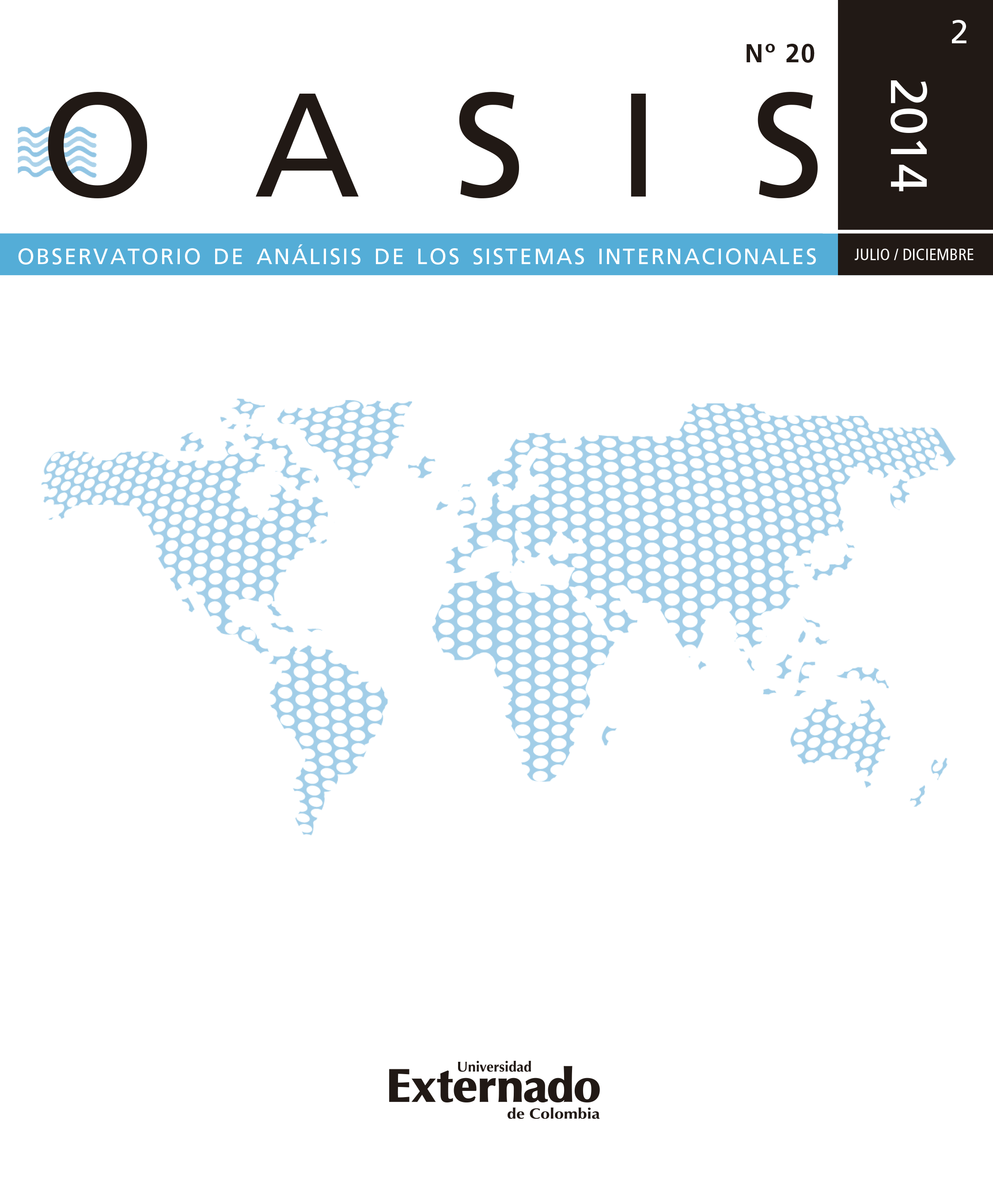The Geostrategic, Techno-Nationalist Push Into Space
The Geostrategic, Techno-Nationalist Push Into Space
Contenido principal del artículo
Resumen
The technological benefits of space hardware are universally recognized. One is hard pressed to find an area of the world where satellite dishes for television reception, satellite use for data transmission, or the Global Positioning System (GPS) for multiple purposes are not utilized. But utilization of commercial or of other countries’ space assets does not equate to being a space-faring nation. Space-faring nations have, to varying degrees, their own capabilities. The importance of status as a space-faring nation comes from two sources: not having to rely on others for access to the benefits of space assets, and prestige that can translate into geopolitical influence. Beyond users and space-faring nations, there are those countries actively asserting space leadership in some form, whether regional or global. What pushes countries to go beyond being a spacefaring nation and assert leadership potential, including potentially engaging in an implicit or explicit space race, is techno-nationalism, which for the purposes of this paper refers to nationalism that becomes the impetus for technology development as an indicator of geostrategic power. It is often triggered by a threat or perception of a threat, including a threat to perceived leadership. Techno-nationalism carries with it an inherent quest for leadership, by some definition.
Descargas
Detalles del artículo
Referencias / Ver
Asokan, S. & Reuters (2013, December 2). India’s Mars Mission leaves Earth’s orbit, surpasses Chinese ambitions. Christian Science Monitor. Retrieved from: http://www.csmonitor.com/science/2013/1202/India-s-Mars-Mission-leavesEarth-s-orbit-surpasses-Chinese-ambitions.
Beard, K. (2013, September 26). China Plans to Launch First Orbiting Space Station in 2023. U.S. News & World Report. Retrieved from: http://www.usnews.com/news/articles/2013/09/26/chinaplans-to-launch-first-orbiting-space-station-in-2023.
Bezlova, A. (2003, October 15). Science: By Launching a “Taikonaut’, China Enters the. Global Information Network.
Covault, C. (2012, December 13). India Races China in Space For Asian Prestige, Military Security. Space Ref. Retrieved from: http://spaceref.com/asia/india-races-china-in-space-for-asian-prestige-military-security.html.
Friedman, L. (2011, February 14). American Leadership. The Space Review. Retrieved from: http://www.thespacereview.com/article/1778/1.
Garrone, R. (2003, August 26). Accident wounds Brazil’s space program. abc Science. Retrieved from: http://www.abc.net.au/science/articles/2003/08/26/932250.htm.
Hoey, M. (2009). India’s quest for dual-use technology. Bulletin of Atomic Scientists, 65(5), 43-59.
Hsu, J. (2010, November 9). Iran’s Space Program: Lots of Talk, but a Chance to Shine. Retrieved from: http://www.space.com/9499-iran-space-program-lots-talk-chance-shine.html.
Information Office of the State Council. (2011). China’s Space Activities in 2011. Beijing: Xinhua News Agency.
Interfax-avn. (2010). Russian space agency to assist India in its manned spaceflight program. bbc Worldwide Monitoring.
Japan Economic Newswire (2003, October 15).China’s Launch of Manned Spacecraft Welcomed in Japan. Japan Economic Newswire.
Johnson-Freese. (2001, January-February). Becoming Chinese: Or, How U.S. Satellite Export Policy Threatens National Security. Space Times, 4-12.
Johnson-Freese, J. (2000, August). Alice in Licenseland: us satellite export controls since 1990. Space Policy, 195-204.
Johnson-Freese, J. (2004). Space Wei Qi: The launch of Shenzhou V. Naval War College Review, 125-127. Retrieved from: https://www.usnwc.edu/getattachment/ba695c64-2c13-4913-a6f5-9ebcec9aa311/Space-Wei-Qi--The-Launch-of-Shenzhou-V---Johnson-F.aspx.
Johnson-Freese, J. (2007). Space as a Strategic Asset. Columbia: Columbia University Press.
Johnson-Freese, J. & Gatling, L. (2004, September). The Security Implications of Japan’s Information Gathering Satellites (igs). Intelligence & National Security, 19(3), 538-552.
Johnson-Freese, J. & Hoey, M. (2010, November 3). India: Militarizing Space with U.S. Help. Foreign Policy in Focus: Retrieved from: http://fpif.org/india_militarizing_space_with_us_help/.
May, M., Panofsky, W. K., Johnston, A. I., Di Capua, M. & Franklin, L. R. (2000, January 5). Stanford Analysts Dispute Congressional Report on Chinese security threat. Retrieved from: http://news.stanford.edu/news/2000/january5/cox-15.html.
Munsil, L. (2014, March 6). Ukraine crisis could end U.S. space reliance on Russia. Politico. Retrieved from: http://www.politico.com/story/2014/03/ukraine-crisis-russia-space-104361.html.
Rai, S. (2014, February 17). From India, proof that a trip to Mars doesn’t have to break the bank. The New York Times. Retrieved from: http://www.nytimes.com/2014/02/18/business/international/from-india-proof-that-a-trip-to-mars-doesnt-have-to-break-the-bank.html?_r=1.
Ramesh, R. (2009, February 24). India plans L1.7 manned space mission by 2015; Move seen as an attempt to catch up with China. High cost criticized at time of recession and poverty. The Guardian.
Saksena, A. R. (2014, March 22). India and Space Defense. The Diplomat. Retrieved from: http://thediplomat.com/2014/03/india-and-space-defense/.
Samson, V. (2010, May 10). India’s missile defense/antisatellite nexus. The Space Review. Retrieved from: http://www.thespacereview.com/article/1621/1.
Select Comittee, United States House of Representatives. (1999, May). U.S. National Security and Military/Commercial Concerns with the People’s Republic of China - Declassified version. Retrieved from: http://www.house.gov/coxreport.
Somini, S. (2009, March 12). As Indian Growth Soars, Child Hunger Persists. The New York Times.
Space Daily. (2013, September 23). China’s space station to open for foreign peers. Retrieved from: http://www.spacedaily.com/reports/Chinas_space_station_to_open_for_foreign_peers_999.html.
Indian Space Research Organization (n.d.). About isro. Retrieved from: http://www.isro.org/scripts/Aboutus.aspx.
Sputnik News (2013, October 20). Russia Offers Brazil New Joint Space Projects. Retrieved from: http://sputniknews.com/russia/20131020/184250734.html.
Sulfikar, A. (2007). Nationalist Rhetoric and Tecnology Development: The Indonesian aircraft industry in the New Order regime. Technology in Society, 283-293.
The Hindu (2008, January 20). Kalam defends Chandrayaan. Retrieved from: http://www.thehindu.com/todays-paper/tp-national/article1182471.ece.
Times of India. (2003, October 16). India Can Match China’s Space Programme. Times of India.

